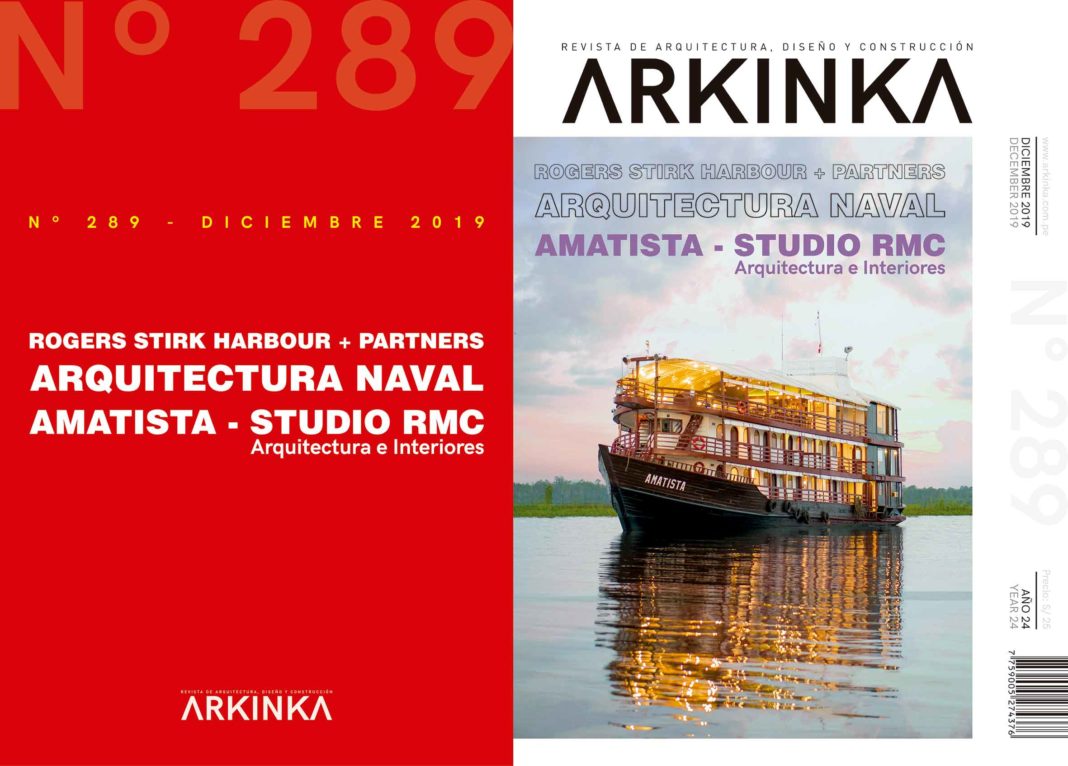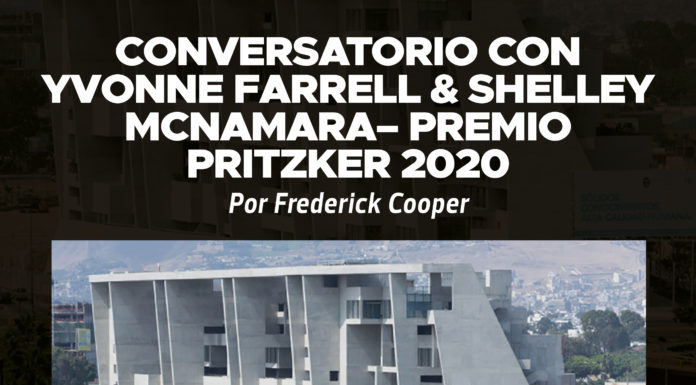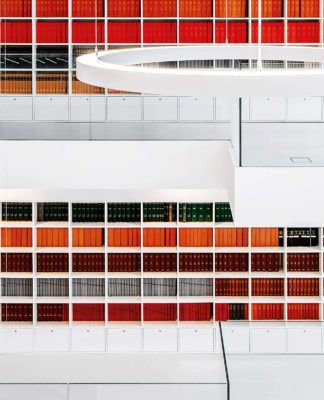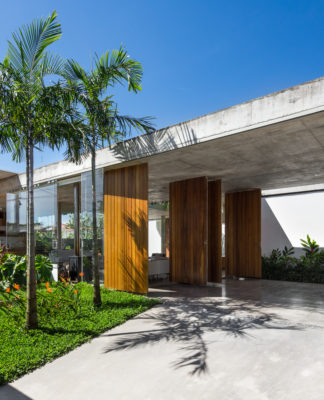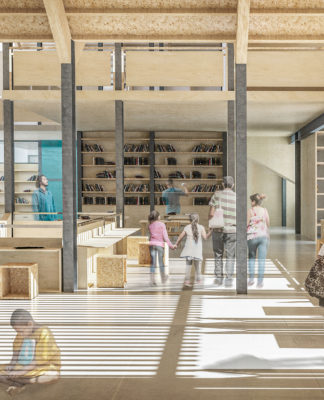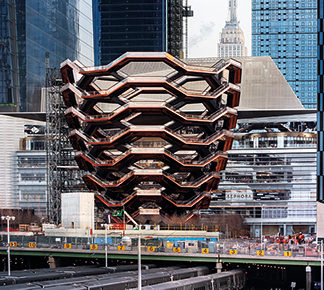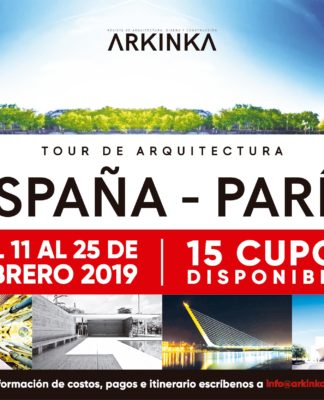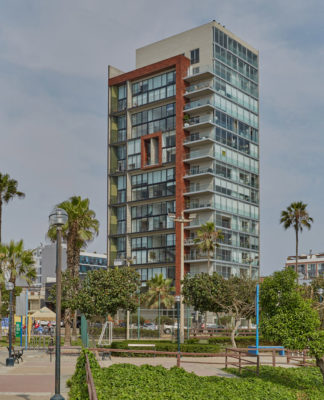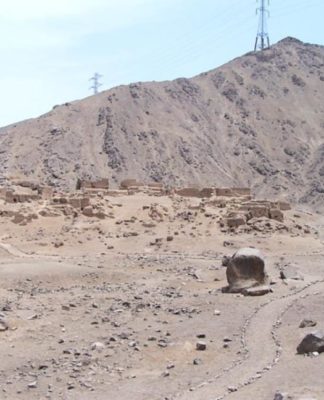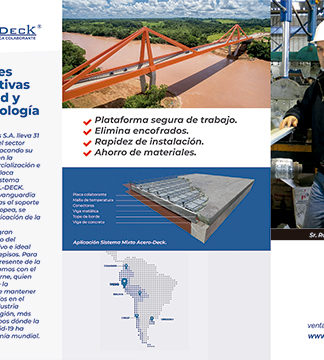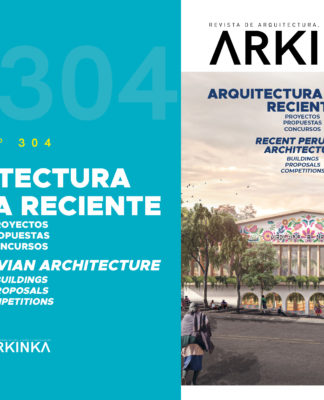Proyecto Pachacamac
Por Taller 5 de la Facultad de Arquitectura y Urbanismo de la PUCP (Perú) + Studio Tom Emerson del Departamento de Arquitectura de la ETHZ (Suiza)
Pachacamac, Lima, Perú
2018
El proyecto de diseño y construcción de un equipamiento basado en una interpretación libre del museo Neue Nationalgalerie de Mies Van der Rohe, se desarrolló entre los profesores y alumnos del Taller 5 de la Facultad de Arquitectura y Urbanismo de la PUCP a cargo de los arquitectos Renato Manrique García y Vincent Juillerat y el Studio Tom Emerson del Departamento de Arquitectura de la ETHZ (Suiza).
El lugar escogido, en virtud de su alto significado cultural e histórico, fue el Santuario de Pachacamac, sitio arqueológico de una extensión de 456 hectáreas ubicado al sur de Lima.
La destilería Macallan y la experiencia del visitante
Por Rogers Stirk Harbour + Partners
Speyside, Reino Unido
2018
La nueva destilería Macallan se encuentra en el paisaje de la finca que ha sido responsable de crear el whisky de malta único desde 1824. Macallan ya está establecido como uno de los fabricantes de whisky más famosos del mundo y quería un nuevo centro que pudiera revelar los procesos de producción y bienvenida a los visitantes sin dejar de ser sensible a la hermosa campiña circundante.
Edificio Central en London School of Economics (LSE)
Por Rogers Stirk Harbour + Partners
Londres, Reino Unido
2019
La London School of Economics and Political Science (Escuela de Economía y Ciencias Políticas de Londres, en español) ha abierto su último edificio emblemático a estudiantes, personal y ex alumnos. El Edificio Central, que tiene un costo de construcción de £ 78 millones como parte de una inversión total de £ 125 millones en el desarrollo del centro del campus de LSE, fue diseñado por los arquitectos de renombre internacional Rogers Stirk Harbour + Partners y entregado por una empresa internacional de consultoría y construcción, Mace.
Instalaciones Migratorias de Cruce Fronterizo de Hong Kong
Por Rogers Stirk Harbour + Partners
Hong Kong
2018
El puente Hong Kong-Zhuhai-Macao proporciona nuevas conexiones estratégicas entre Zhuhai, Macao y Hong Kong. El puente fomentará el flujo de personas, bienes, capital e información y mejorará la conectividad general del Área de la Gran Bahía. El puente mejora la conectividad de transporte dentro del área metropolitana de la bahía y reduce en gran medida el tiempo de viaje entre Hong Kong y otras ciudades del área metropolitana de la bahía.
Centro de Conservación del Louvre en Liévin
Por Rogers Stirk Harbour + Partners
Liévin, Francia
2019
RSHP ganó un concurso internacional para diseñar una nueva instalación de colecciones para el Louvre en 2015. La instalación está diseñada para integrar el almacenamiento y la conservación de más de 250,000 obras de arte que actualmente se distribuyen entre 60 ubicaciones diferentes en Francia. La propuesta ganadora crea una instalación ambientalmente sensible y elegantemente discreta que emerge del paisaje.
Museo Internacional del espía
Por Rogers Stirk Harbour + Partners
Washington D.c., Eeuu
2019
El International Spy Museum forma parte del plan maestro de RSHP para L’Enfant Plaza en Washington DC, y crea un nuevo hogar para el Spy Museum, de propiedad privada, ubicado originalmente en un edificio del siglo XIX en Penn Quarter.
Como edificio cultural, el Museo Internacional del Espía genera actividad e interés dentro de un vecindario conocido por los edificios de oficinas gubernamentales a gran escala. En consecuencia, el nuevo Museo del Espía es un catalizador para la regeneración de la calle 10, iniciando y reforzando las intenciones del Plan de Ecodistrito SW del Comité Nacional de Planificación de Capital.
Divinidades femeninas prehispánicas en Lima
Etnohistoria y etnografía en la reconstrucción de la religión de la antigua costa central (Parte I)
Por Pedro Carlos Vargas Nalvarte
Introducción
La memoria histórica de Lima está ligada a su pasado virreinal y republicano en su mayor parte; sin embargo, grandes esfuerzos de difusión de múltiples trabajos arqueológicos están logrando que en las dos últimas décadas esta visión se complemente con la referida al pasado indígena del territorio donde se asienta nuestra ciudad capital. Proyectos de investigación arqueológica como los desarrollados en Huaca Pucllana, Huaca Mateo Salado, Complejo Arqueológico Maranga, entre otros, nos brindan ahora la oportunidad de entender mejor el pasado de Lima de manera que el imaginario sobre el pasado limeño es un poco más completo. Pero, existen aún inmensas posibilidades de ampliar estos conocimientos, no sólo con evidencia arqueológica, sino con datos etnográficos y etnohistóricos. Esta idea no es nueva y desde tiempos del Dr. Julio C. Tello se ha trabajado de esta manera; lamentablemente, no han gozado de la difusión adecuada, ni tampoco se ha seguido dicha línea de investigación; salvo, las excelentes propuestas de María Rostworowski.
Pachacamac Project
By Workshop 5 from the Architecture and Urbanism School of the PUCP (Perú) + Studio Tom Emerson from the Architecture Department of the ETHZ (Switzerland)
Pachacamac, Lima, Peru
2018
The design and construction project of an equipment based on a free interpretation of the Neue Nationalgalerie museum of Mies Van der Rohe, was developed among the professors and students of the Workshop 5 from the Architecture and Urbanism School of the PUCP (Perú) by architects Renato Manrique García and Vincent Juillerat and the Studio Tom Emerson of the ETHZ Department of Architecture (Switzerland)
The place chosen, by virtue of its high cultural and historical significance, was the Pachacamac Sanctuary, an archaeological site of an area of 456 hectares located south of Lima.
The Macallan Distillery and Visitor Experience
By Rogers Stirk Harbour + Partners
Speyside, UK
2018
The new Macallan Distillery is set into the landscape of the estate that has been responsible for creating the single malt whisky since 1824. The Macallan is already established as one of the most famous whisky makers in the world and wanted a new centre that could reveal the production processes and welcome visitors while remaining sensitive to the beautiful surrounding countryside.
Centre Building at The London School of Economics (LSE)
By Rogers Stirk Harbour + Partners
London, UK
2019
The London School of Economics and Political Science (LSE) has opened its latest landmark building to students, staff and alumni. The Centre Building, which has a £78m construction cost as part of an overall investment of £125m in developing the centre of LSE’s campus, was designed by internationally renowned architects Rogers Stirk Harbour + Partners and delivered by international consultancy and construction company Mace.
Hong Kong Boundary Crossing Facilities – Passenger Clearance Building
By Rogers Stirk Harbour + Partners
Hong Kong
2018
The Hong Kong-Zhuhai-Macao Bridge provides new strategic connections between Zhuhai, Macao and Hong Kong. The bridge will foster the flow of people, goods, capital and information and improve the overall connectivity of the Greater Bay Area. The bridge improves transport connectivity within the Greater Bay Area, and greatly reduces travelling time between Hong Kong and other Greater Bay Area cities.
Centre de conservation du Louvre à Liévin
By Rogers Stirk Harbour + Partners
Liévin, France
2019
RSHP won an international competition to design a new collections facility for the Louvre in 2015. The facility is designed to integrate storage and conservation of more than 250,000 works of art that are currently distributed between 60 different locations around France. The winning proposals create an environmentally sensitive and elegantly understated facility emerging from the landscape.
International Spy Museum
By Rogers Stirk Harbour + Partners
Washington D.C., USA
2019
The International Spy Museum forms part of RSHP’s masterplan for L’Enfant Plaza in Washington DC, and creates a new home for the privately-owned Spy Museum originally located in a 19th Century building in Penn Quarter.
As a cultural building, The International Spy Museum generates activity and interest within a neighbourhood noted for large scale government office buildings. Consequently, the new Spy Museum is a catalyst for the regeneration of 10th Street, initiating and reinforcing the intentions of the National Capital Planning Committee SW Ecodistrict Plan.
Prehispanic female divinities in Lima
Ethnohistory and ethnography in the reconstruction of the ancient central coast religion (First part)
By Pedro Carlos Vargas Nalvarte
Introduction
The historical memory of Lima is mostly linked to its viceroy and republican past; However, great efforts to disseminate multiple archaeological works are achieving to recognize that in the last two decades this vision is complemented by the indigenous past of the territory where the Peruvian capital city is based. Archaeological research projects such as those developed in Huaca Pucllana, Huaca Mateo Salado, Maranga Archaeological Complex, among others, now give us the opportunity to better understand Lima’s past. But, there are still immense possibilities to expand this knowledge, not only with archaeological evidence, but with ethnographic and ethnohistorical data. This idea is not new and has been used since the time of Dr. Julio C. Tello; unfortunately, adequate dissemination wasn’t considered, nor has this line of research been followed; except, the excellent proposals by Maria Rostworowski.

